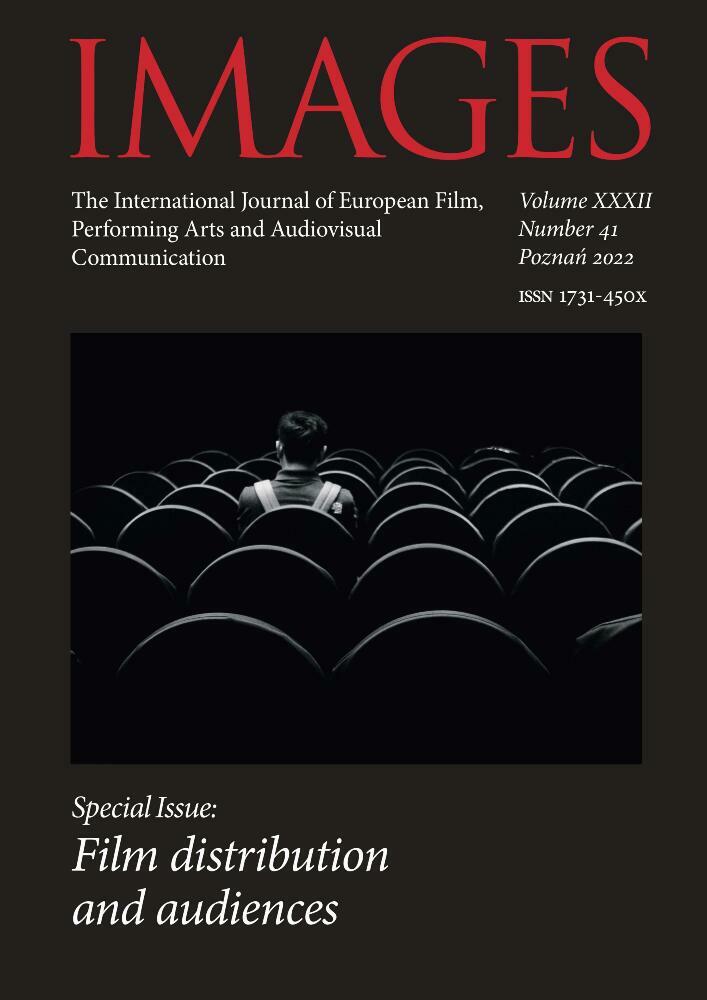Abstrakt
When a researcher deals with a film audience, it is easier to study the one that exists and is still active. In this case, social sciences and the humanities supply practical tools and relatively easy access to all kinds of data. It is much more difficult to capture experiences, emotions, and rituals of the audiences from many decades ago, working with an impermanent human memory, unreliable personal or press sources. The article discusses the basic methodological problems related to the researching film audiences that no longer exist (especially from the pre-WW2 years). It turns out that the difficulties are not only in how to read the sources and how to evaluate the data. The cinema historian confronts more serious challenges. Do we have access to other people’s experiences without personal contact? Can research focused on subjective and mediated feelings capture an objective image at all? What may result from research with so many unknowns? The article, based on the author’s many years of experience in researching cinema-going, is a proposal on how to respond to all these questions.
Bibliografia
Allen R.C., Gomery D., Film History: Theory and Practice, New York 1985
Borges J.L., Alef, przeł. A. Sobol-Jurczykowski, Warszawa 2020
Bottomore S., Out of is World: Theory, Fact and Film History, „Film History” 1994, t. 6, nr 1, s. 7–25
Burgin V., The Remembered Film, London 2004
Carr E.H., Historia. Czym jest?, przeł. P. Kuś, Poznań 1999
Domańska D., Mikrohistorie. Spotkania w międzyświatach, wyd. II, Poznań 2005
Figes O., Afterword, [w:] L. Tolstoy, War and Peace, przeł. A. Briggs, London 2005
Gunning T., An Aesthetic of Astonishment: Early Film and the (In)credulous Spectator, „Art and Text”, Spring 1989, nr 34, s. 31–45
Hansen M., Babel and Babylon: Spectatorship in American Silent Film, Cambridge–London 1991
Hiley N., “At the Picture Palace”: The British Cinema Audience, 1895–1920, [w:] Audiences: Defining and Researching Screen Entertainment Reception, red. I. Christie, Amsterdam 2012, s. 25–34 https://doi.org/10.1515/9789048515059-004 DOI: https://doi.org/10.1515/9789048515059-004
Kuhn A., Everyday Magic: Cinema and Cultural Memory, London–New York 2002
Kuhn A., Słoiki po dżemie i cliffhangery: brytyjscy seniorzy wspominają dziecięce wizyty w kinie, [w:] Badanie widowni filmowej. Antologia tekstów, red. K. Klejsa, M. Saryusz-Wolska, Warszawa 2014, s. 77–100 https://doi.org/10.5040/9780755699476 DOI: https://doi.org/10.5040/9780755699476
Kuhn A., What to do with Cinema Memory, [w:] Explorations in New Cinema History. Approaches and Case Studies, red. R. Maltby, D. Biltereyst, P. Meers, Chichester 2011, s. 85–97 https://doi.org/10.1002/9781444396416.ch4 DOI: https://doi.org/10.1002/9781444396416.ch4
Landau-Czajka A., Syn będzie Lech... Asymilacja Żydów w Polsce międzywojennej, Warszawa 2006
Łotman J., Rosja i znaki. Kultura szlachecka w wieku XVIII i na początku XIX, przeł. B. Żyłko, Gdańsk 2010
Łotman J., Wola boska czy gra hazardowa (Prawidłowość i przypadek w procesie historycznym), przeł. B. Żyłko, „Polska Sztuka Ludowa. Konteksty” 1997, nr 1–2, s. 32–35
Maltby R., New Cinema Histories, [w:] Explorations in New Cinema History. Approaches and Case Studies, red. R. Maltby, D. Biltereyst, P. Meers, Chichester 2011, s. 30–40 https://doi.org/10.1002/9781444396416.ch1 DOI: https://doi.org/10.1002/9781444396416.ch1
May L., “Babel and Babylon: Spectatorship in American Silent Film” by Miriam Hansen, „Journal of Social History”, Fall 1993, t. 27, nr 1, s. 149–152 Plantinga C., Moving Viewers: American Film and the Spectator’s Experience, Los Angeles 2009 https://doi.org/10.1353/jsh/27.1.149 DOI: https://doi.org/10.1353/jsh/27.1.149
Płażewski J., Nowa Historia Filmu – co to takiego?, „Kino” 2014, nr 6, s. 64–65
Raynauld I., Dialogues in Early Silent Screenplays: What Actors Really Said, [w:] The Sounds of Early Cinema, red. R. Abel, R. Altman, Bloomington 2001, s. 69–78
Rhodes G.D., The Perils of Moviegoing in America 1896–1950, New York–London 2012 https://doi.org/10.5040/9781628929003 DOI: https://doi.org/10.5040/9781628929003
Sedgwick J., Popular Filmgoing in 1930s Britain: A Choice of Pleasures, Exeter 2000
Sedgwick J., Pafort-Overduin C., Znajomość zachowań widowni na podstawie danych statystycznych: Londyn i Amsterdam w połowie lat 30. XX wieku, [w:] Filmowa Europa, red. M. Pabiś-Orzeszyna, M. Rawska, P. Sitarski, Łódź 2020, s. 203–223 https://doi.org/10.18778/7969-572-0.09 DOI: https://doi.org/10.18778/7969-572-0.09
Sitkiewicz P., Gorączka filmowa. Kinomania w międzywojennej Polsce, Gdańsk 2019
Smoodin E., Paris in the Dark: Going to the Movies in the City of Light, 1930–1950, Durham 2020 https://doi.org/10.1215/9781478090281 DOI: https://doi.org/10.1215/9781478090281
Tokarska-Bakir J., Okrzyki pogromowe. Szkice z antropologii historycznej Polski lat 1939–1946, Wołowiec 2012
Tolstoy L., A Few Words Propos of the Book “War and Peace”, [w:] L. Tolstoy, War and Peace, przeł. R. Pevear, L. Volokhonsky, New York 2007
Tsivian Y., Early Cinema in Russia and its Cultural Reception, przeł. A. Bodger, London–New York 2005 https://doi.org/10.1215/9781478090281 DOI: https://doi.org/10.4324/9780203992890
Żyłko B., Semiotyka kultury. Szkoła tartusko-moskiewska, Gdańsk 2009
Licencja
Prawa autorskie (c) 2023 Paweł Sitkiewicz

Utwór dostępny jest na licencji Creative Commons Uznanie autorstwa 4.0 Międzynarodowe.

